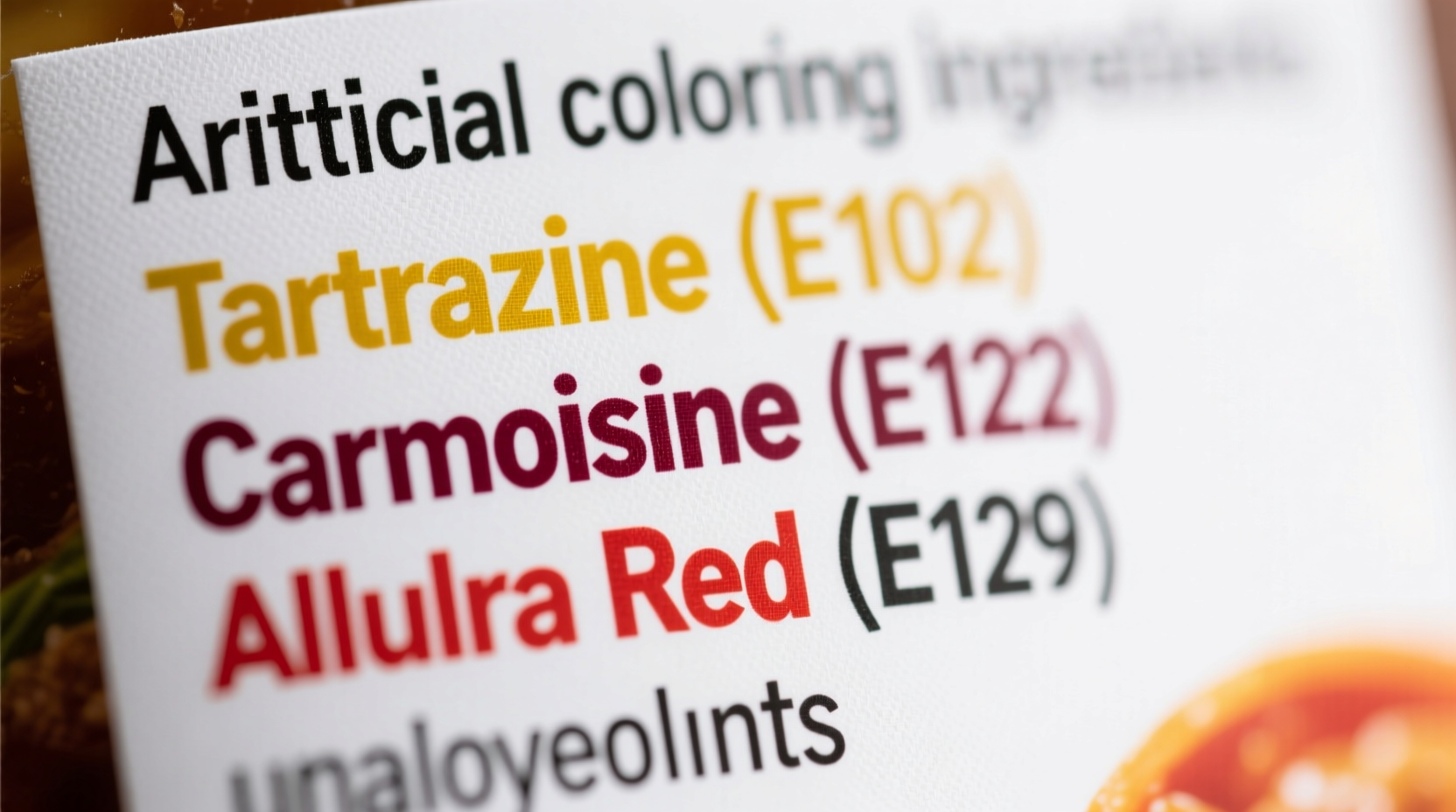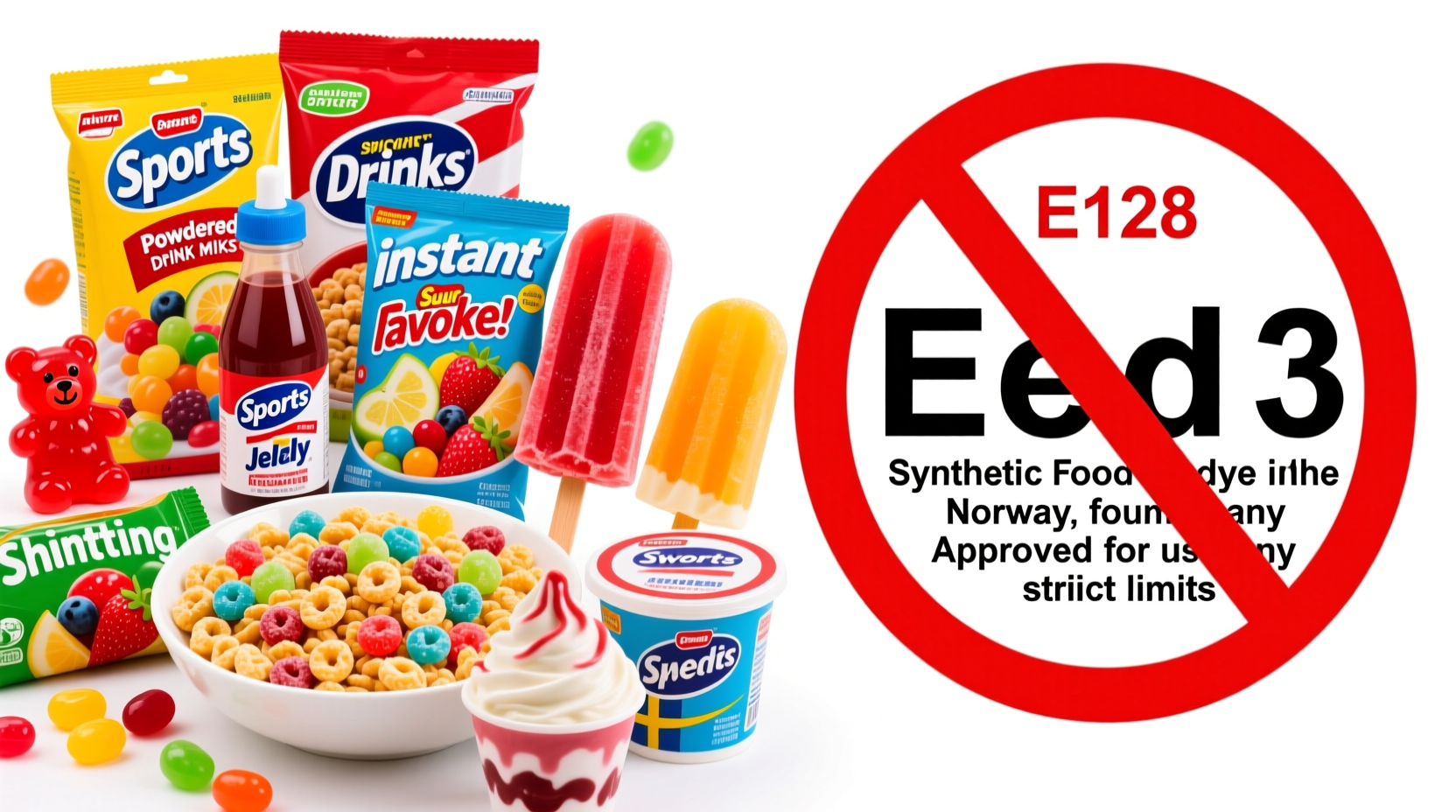If you're checking food labels or concerned about synthetic colorings in your diet, knowing exactly which products contain Red 3 is essential. This comprehensive guide details where Red 3 commonly appears in the food supply, how to identify it on labels, and what you need to know about this controversial food additive.
Understanding Red 3: The Basics You Need to Know
Red 3, officially known as FD&C Red No. 3 or Erythrosine (E127), is a synthetic xanthene dye approved by the FDA for specific food, drug, and cosmetic applications. Unlike Red 40 which is water-soluble, Red 3 is particularly valued for its stability in low-pH environments and resistance to fading when exposed to light.
Since 1990, the FDA has banned Red 3 in externally applied drugs and cosmetics due to cancer concerns observed in animal studies, but it remains permitted in ingested products. The European Union has taken a stricter approach, prohibiting Red 3 in foods entirely while allowing limited use in medications.
Top Food Categories Containing Red 3
When checking products, focus your attention on these common categories where Red 3 appears most frequently:
Candies and Sweet Treats
Red 3 maintains its vibrant color in acidic environments, making it ideal for fruit-flavored candies. You'll commonly find it in:
- Maraschino cherries (nearly all commercially produced varieties)
- Fruit snacks and gummies
- Some chewing gums
- Candy coatings and cake decorations
- Pop Rocks and similar novelty candies
Baked Goods and Cake Decorations
Bakers favor Red 3 for cake decorations because it doesn't fade during baking. Look for it in:
- Fondant decorations
- Icing colors (especially bright red shades)
- Cake sprinkles and decorative elements
- Pre-made frosting tubes
Desserts and Frozen Treats
Red 3 appears in various frozen desserts where color stability matters:
- Certain popsicles and freezies
- Some sherbets and sorbets
- Fruit-flavored ice creams
- Canned fruit cocktail products
How to Spot Red 3 on Food Labels
Reading ingredient labels is your most reliable method for identifying Red 3. Look for these specific terms:
- “FD&C Red 3” (most common labeling)
- “Erythrosine”
- “E127” (in some international products)
Remember that manufacturers aren't required to specify which red dye they use in products labeled simply as “Artificial Colors” or “Color Added,” making identification more challenging. Products specifically marketed as “Red 40-free” may still contain Red 3 as an alternative coloring agent.
| Food Coloring | Common Food Applications | Regulatory Status (US) | Key Characteristics |
|---|---|---|---|
| Red 3 (Erythrosine) | Maraschino cherries, cake decorations, fruit snacks | Permitted in foods, banned in cosmetics | Stable in acidic conditions, doesn't fade with light exposure |
| Red 40 (Allura Red) | Soft drinks, candies, baked goods | Permitted in foods and cosmetics | Most widely used red dye, water-soluble |
| Natural Alternatives | Various applications | Generally recognized as safe | Beet juice, carmine, anthocyanins from fruits |
Red 3 in Medications and Supplements
While your focus might be on food products, Red 3 also appears in numerous medications and supplements. The FDA permits its use in pharmaceuticals where it serves as a coloring agent in:
- Prescription medications (particularly liquid forms)
- Over-the-counter pain relievers
- Vitamins and dietary supplements
- Antacid tablets
Unlike food products, medications list color additives by their established names rather than numerical designations, so you'll see “Erythrosine” on drug labels instead of “Red 3.” The Center for Drug Evaluation and Research maintains a complete list of approved color additives for medications available on the FDA website.
Health Considerations and Current Research
Understanding the potential health implications of Red 3 helps put its presence in foods into perspective. The FDA maintains that Red 3 is safe for consumption in approved applications, but research continues to examine potential concerns:
A 1983 National Toxicology Program study found evidence of thyroid tumors in male rats fed high doses of Red 3, leading to the cosmetic ban but not a food ban. More recent research, including a 2020 review published in Food and Chemical Toxicology, suggests that typical dietary exposure levels remain well below thresholds of concern for most consumers.
Certain populations may want to exercise caution:
- Children with ADHD: Some studies suggest potential behavioral effects from synthetic food dyes
- Individuals with iodine sensitivity: Erythrosine contains iodine
- People with specific food dye allergies

Making Informed Choices About Red 3
If you're looking to avoid Red 3, these practical strategies will help you navigate the grocery store with confidence:
Reading Labels Effectively
Develop a habit of checking ingredient lists for “FD&C Red 3” or “Erythrosine.” Remember that products labeled “No Artificial Colors” or “Naturally Colored” won't contain Red 3 or other synthetic dyes.
Choosing Natural Alternatives
Many manufacturers now use natural colorings instead of synthetic options:
- Look for products colored with beet juice, fruit extracts, or carmine
- Choose organic-certified products which prohibit synthetic dyes
- Consider making homemade versions of problematic items (like cherry toppings)
Understanding Regional Differences
Be aware that food regulations vary internationally. While Red 3 remains permitted in US foods, it's banned in foods throughout the European Union. When purchasing imported products, check labeling requirements for the country of origin.
Frequently Asked Questions About Red 3 in Foods
Which common grocery products typically contain Red 3?
Maraschino cherries represent the most consistent source of Red 3 in grocery stores, with nearly all commercial varieties using this dye. You'll also commonly find it in cake decorations, certain fruit snacks, popsicles, and some baked goods where a stable red color is needed.
Is Red 3 the same as Red 40?
No, Red 3 (Erythrosine) and Red 40 (Allura Red) are chemically distinct food dyes with different properties. Red 3 works better in acidic conditions and doesn't fade with light exposure, while Red 40 is more water-soluble and widely used in beverages. Products labeled “Red 40-free” may still contain Red 3.
Why do manufacturers use Red 3 instead of natural colorings?
Manufacturers choose Red 3 for its superior color stability in acidic environments and resistance to fading from light exposure. Natural alternatives like beet juice can change color with pH variations and often provide less vibrant hues. Red 3 also delivers consistent results at lower concentrations compared to many natural options.
Are there health concerns associated with Red 3 consumption?
The FDA considers Red 3 safe for consumption in approved applications, though it banned the dye in cosmetics in 1990 due to cancer concerns in animal studies. Some research suggests potential behavioral effects in sensitive children, and individuals with iodine sensitivity should be cautious as Erythrosine contains iodine. Current evidence indicates typical dietary exposure remains below safety thresholds for most consumers.
How can I identify Red 3 on food labels?
Look for “FD&C Red 3” or “Erythrosine” in the ingredient list. Be aware that products listing only “Artificial Colors” or “Color Added” without specifying which dyes are used may contain Red 3. Organic-certified products cannot contain synthetic dyes like Red 3.











 浙公网安备
33010002000092号
浙公网安备
33010002000092号 浙B2-20120091-4
浙B2-20120091-4